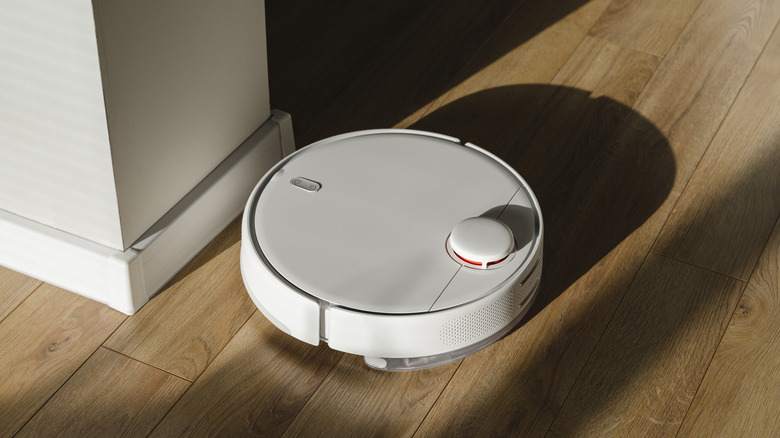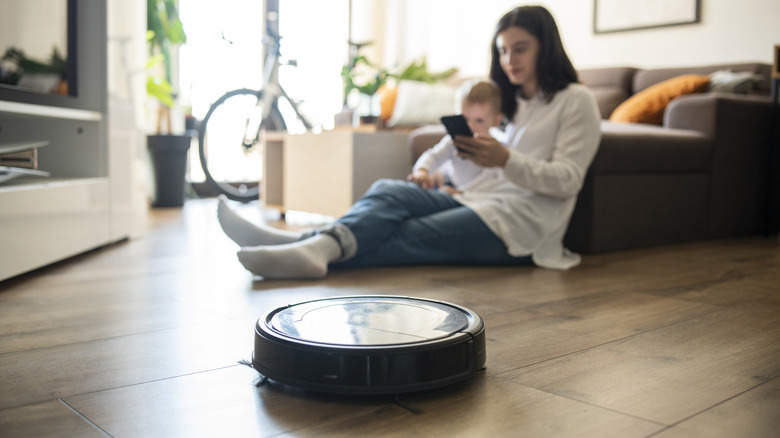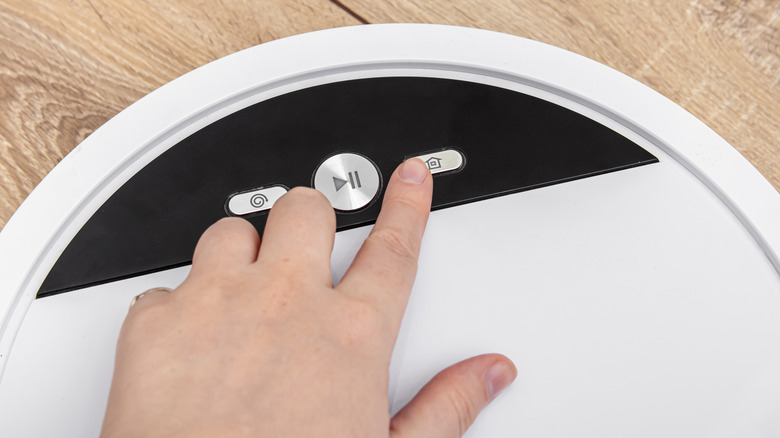Professional Cleaners Say This Is The Right Way To Use A Robot Vacuum In Your Home
Once upon a time, it was a rare novelty to meet someone who owned a robot vacuum. Nowadays, these gadgets are only becoming more common as they get more advanced: They can mop the floor, empty their own dirt bins, map out your house, and more. It's easy to understand the popularity of a tool that can take over a chore and keep your room clean for longer, but cleaning experts warn not to depend on robot vacuums too heavily.
According to cleaning professionals, a robot vacuum shouldn't be the only vacuum cleaner you own. Instead of letting the robot vacuum do all the work, use it for touch-ups and daily maintenance; This is where robot vacuums really shine, as they can be programmed to vacuum the whole house more often than you would have time to do yourself.
Meanwhile, you should still handle the deeper, more thorough cleanings with a traditional vacuum. If you use the robot in between, your own vacuuming should take you less time since you can focus your efforts on areas that the robot vacuum missed.
Why you should still vacuum yourself
Robot vacuums have downsides as well as benefits. They're typically not as effective as upright vacuums because their motors are smaller. Performance varies by model, but in general, they tend to have an especially hard time tackling pet hair and removing dirt and allergens from carpet fibers. They also struggle to reach all the way into corners or along baseboards. Naturally, they can't climb up stairs or onto furniture, so those would go uncleaned if you only used the robot. And while robot vacuums are getting smarter and smarter, they still lack the discernment to make their own cleaning decisions. They may miss spots, get stuck, or accidentally make a mess even worse.
On the other hand, robot vacuums are better at certain tasks than humans. For example, since they're so compact, they can clean spots that are hard to access with bulky upright machines, such as under couches or bookshelves. And unlike people, they never tire, so they can clean as often and as long as their battery allows. They're ideal for cleaning rooms without much clutter in the way.
Decide on a regular cleaning schedule for your robot vacuum, taking into account whether you have pets, kids, or lots of traffic in your home. Frequent touch-ups with a robot vacuum will ensure that fewer dust bunnies accumulate and cut down on the amount of debris in your home overall. When you deep clean, focus on corners, carpets, and any other spots that the robot may have missed. Additionally, stick to an upright vacuum for more extensive messes, such as rooms that haven't been cleaned in a long time.
How often should you run your robot vacuum?
The best schedule for your robot vacuum depends, in short, on how quickly your house accumulates debris. For example, people who live alone without pets or kids may only need to run it a couple of times per week. If you have pets, kids, or a large family, running the robot vacuum every one to two days is ideal. Aim to deep clean with your upright vacuum every one to three weeks — again depending on your home and lifestyle.
Bigger homes with carpets rather than hardwood should be vacuumed more frequently, both with the robot vacuum and with a traditional vacuum. Frequent vacuuming is essential for people with allergies, especially if there are carpets in the home. In addition to vacuuming more often, those with more intensive cleaning needs should take that into account when selecting a robot vacuum, as there's a lot of variety in what features they offer.
As for the best time of day to run your robot vacuum, sometime in the morning or afternoon is best because the robot's sensors can see more easily in daylight. Schedule it to vacuum while you're away at work so you can come home to a cleaner house — just don't forget to tidy up beforehand and block off any areas you don't want the robot to enter.


